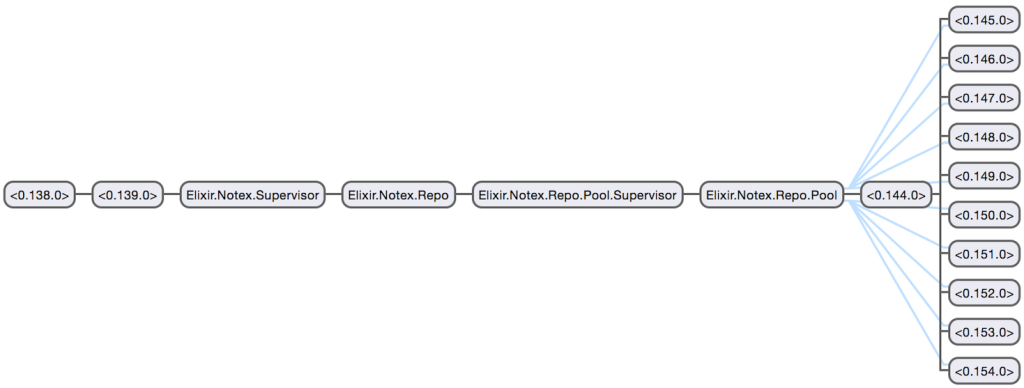
relevant_date is right there on the changes field, and yet it's still telling me that relevant_date can't be blank. I have an input with an attribute of type'number', however this attribute does not fully work for Internet Explorer 11 so I need back end validation to have browser compatability. This is the part that doesn't make any sense to me. I am trying to validate a field for employee working hours. Ecto.Query - written in Elixir syntax, queries are used to retrieve information from a given repository. both relevant_date and display_time are missing, and as such the errors should be there. When I do a put_change, the returned changeset is still saying there's an error on the changeset (field missing), even though it is right there in the changes. I have a "domain model" struct that has some required fields. In Elixir, we decouple the data model from the it's behavior.Learning Elixir/Ecto, and have hit a snag related to changesets. Note that we are examining the active record pattern in general, not necessarily the active record library that ships with Rails. For creating an invoice, you could create a changeset that looks like this: In this changeset, only three. If the check constraint fails, the db throws. At that point, the db executes the check constraint to determine if the insert will succeed or not. If the changeset is valid, then Ecto actually tries to do the insert in the db. To illustrate this, we'll create an arbitrary validation called 'olderthan13'. The changeset () function applies all the validators that you specify and thereby determines if the changeset is valid. For these, use: validatechange (cset, name, function): adds whatever errors to the changeset that function returns, with the label of the atom passed into name.
#Elixir ecto changeset update
The active record pattern is an architectural pattern used to store in-memory object data in relational databases. In Elixir, using Ecto, you could make a changeset for every update strategy you need. We can also create custom validations that validate a changeset based on any arbitrary function.

Repo.update(changeset) Active Record pattern The business logic is separated from the data model.Ĭhangeset = (author, name: "Robert Frost") The repository pattern uses a centralized module for communicating with the database. Repository patternĪ Repository mediates between the domain and data mapping layers, acting like an in-memory domain object collection. The repository pattern isolates the domain layer from the persistence strategies. Instead of combining domain and data access into the same object, the repository pattern provides an explicit boundary to partition Contrast this with the repository pattern which mediates between the domain and data mapping layers. Using Ecto Instead of doing validations manually, let’s create an Ecto.Schema and an accompanying changeset called AccountController. Each takes a changeset as its first parameter and returns a changeset that will have newly-added. The issue with the active record pattern is that the Model class represents both the domain model, and the data model. Ecto provides a number of functions for creating validations. This is the primary objective of a database wrapper like Ecto or Active Record.Įcto is the database wrapper that ships with Phoenix by default.Įcto follows the repository pattern for data access.


The issue is translating the logical representation of domain models into an atomized form that is capable of being stored in a database without obscuring their properties or relationships. castassoc/3 works matching the records extracted from the database (preload) and compares it with the parameters provided from an external source. Databases are designed to store scalar values, while programmers usually work with higher-level abstractions, such as objects. As it is stated in the documentation for /3. Our monthly meetup is where we go over Elixir ecosystem news, listen to great talks, and socialise with other Elixir developers of all levels. However, for our application to interface with a database, we'll need to use a third party to translate for us. defmodule MyRewards.Transaction do entrytypes :credit, :debit use MyRewards.Model schema 'myrewardstransactions' do field :amount, field :type, :string belongsto :user, MyRewards.User belongsto :merchant, MyRewards. That is precisely what they are designed for. This is because databases, both relational and document-oriented, are great at storing, sorting, and retrieving massive amounts of data. High level overviewĪpplications rely on databases to store and retrieve data. You can do this by adding createdbyid in the list of fields passed to cast, an assocconstraint (:createdby) and then sending the users id in the key createdbyid to Room.changeset/2.

Two of the most critical units of any application are the business logic and data access. As clarified in the comments, you want to associate an existing User with a new Room.
#Elixir ecto changeset software
Software applications are composed of many small independent units that are intricately woven together.


 0 kommentar(er)
0 kommentar(er)
